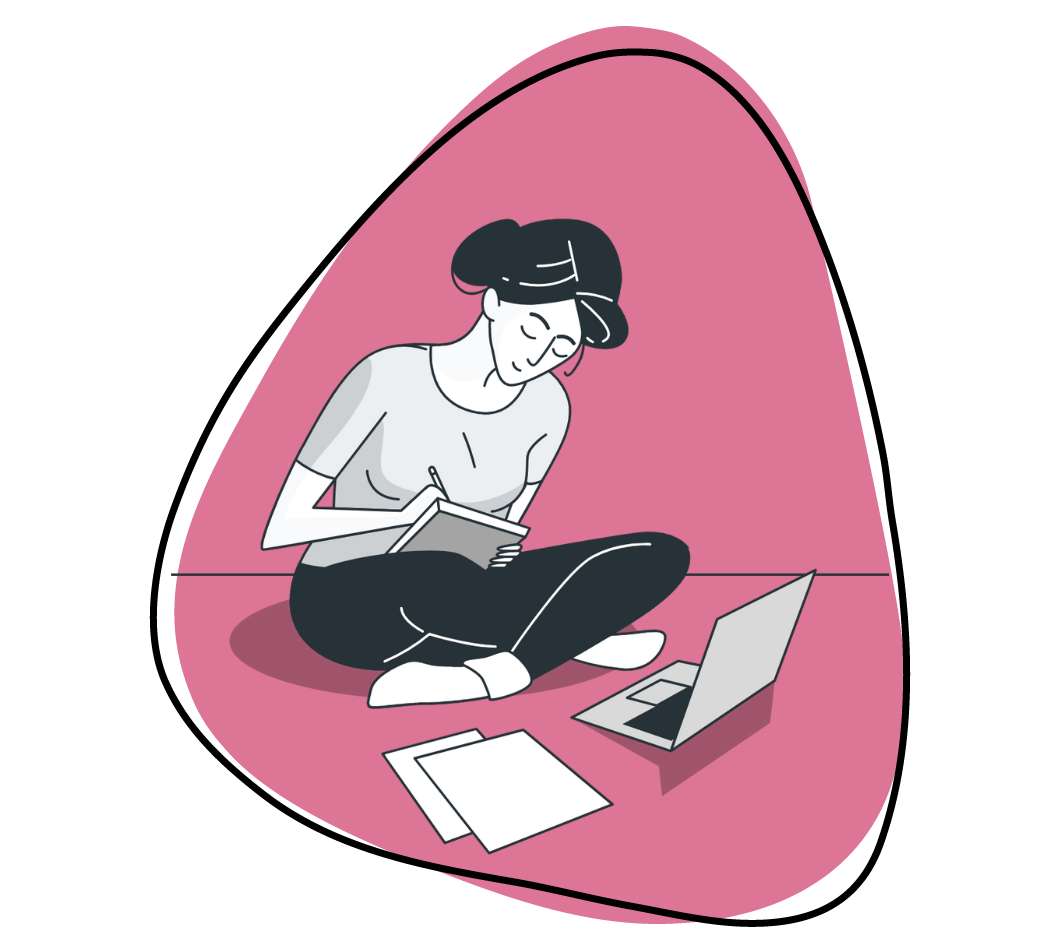How do you know what a customer feels about your company or products or service? What data informs the next product or feature to create that will satisfy your customers? How certain can you be that your customers are getting what they expect from you?
The answers to these questions and many more important ones can be found by running customer satisfaction surveys. Getting feedback from your customers is the only surefire way to know what they’re thinking and feeling, what they want, what they like and dislike, and how you can deliver the solutions they desire.
We’ll dive into a number of different customer satisfaction surveys you can send out, show you some sample survey questions, and then show you a few real examples of surveys sent by successful online companies.
Let’s start by defining these surveys.
What are Customer Satisfaction Surveys?
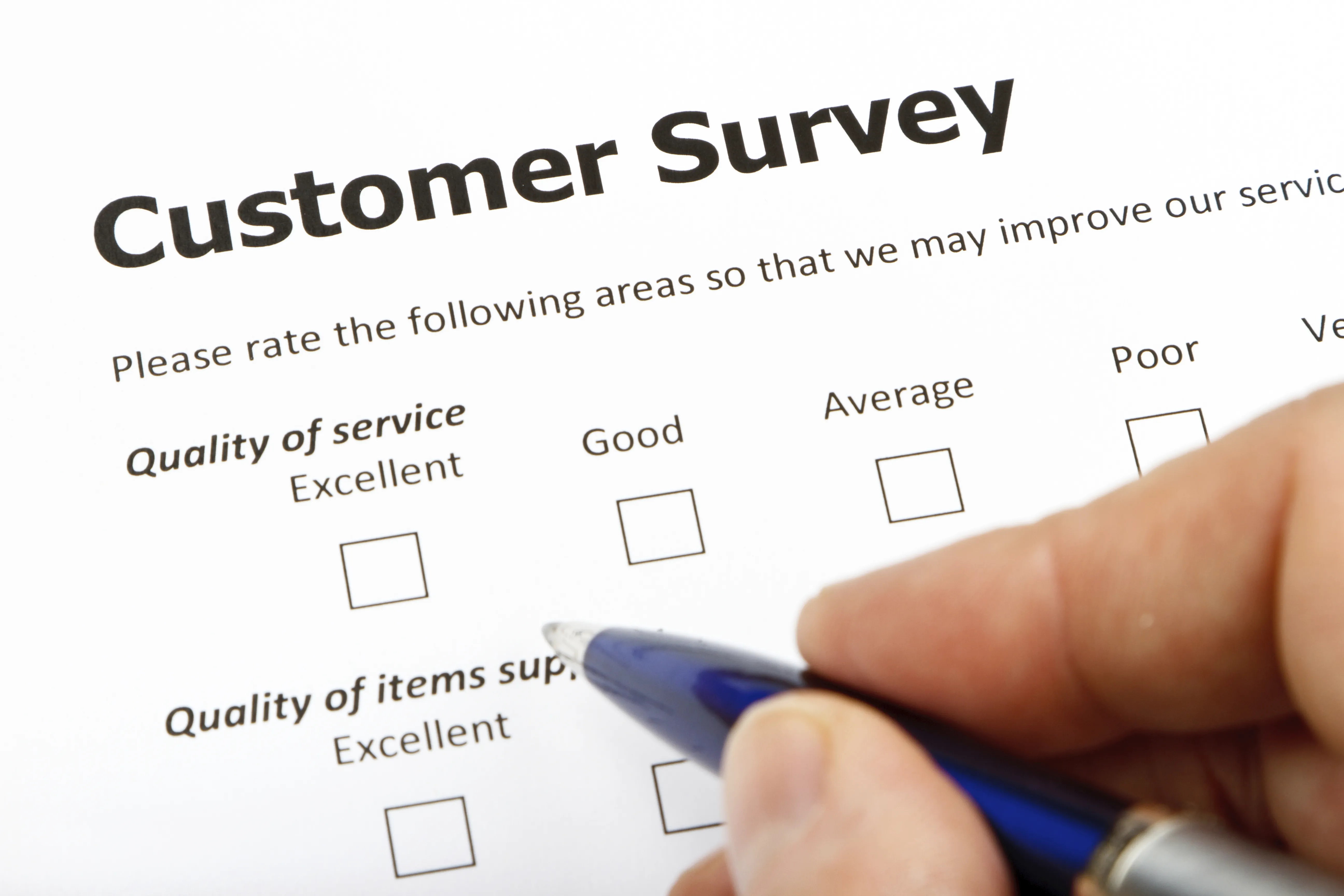
A customer satisfaction survey, or customer feedback survey is both the name of a specific type of survey and the general term for any survey that seeks to understand customers’ sentiments related to your products and services.
The customer survey questions are designed to draw out piercing responses that can be analyzed, organized, and acted upon for higher-quality service and solutions.
Types of Customer Satisfaction Surveys
Do you want to start creating customer satisfaction surveys?
There are many types of customer satisfaction surveys that all play a separate, but important, role.
1. Customer Satisfaction (CSAT) Score Survey
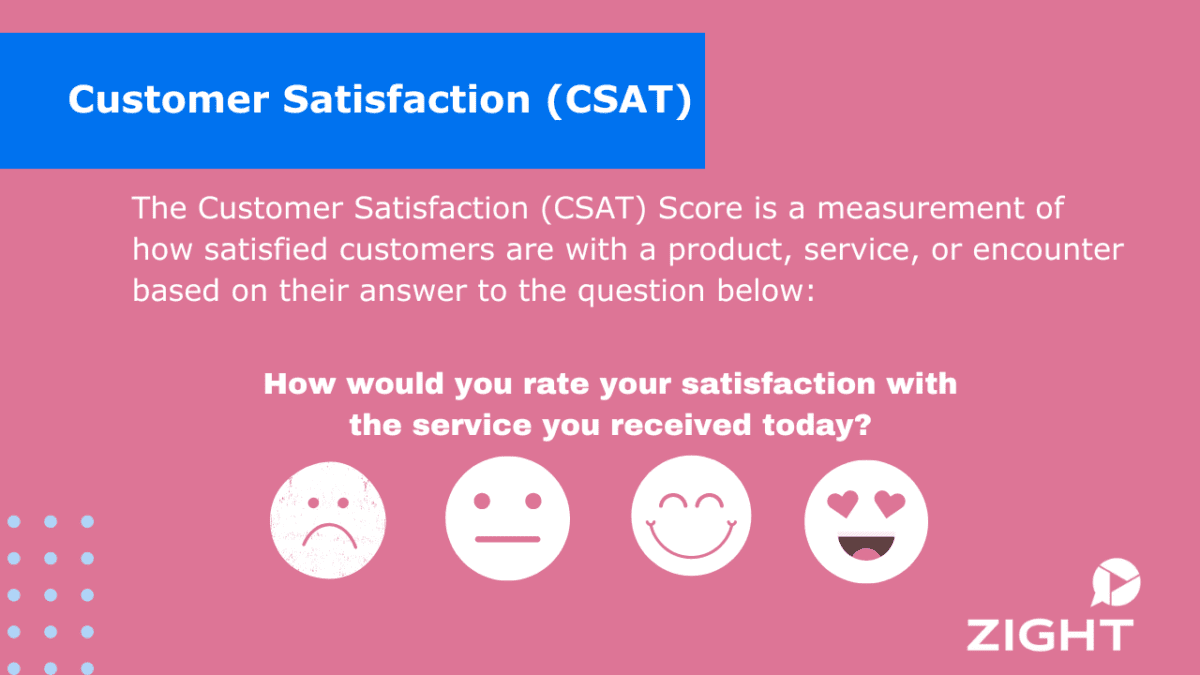
A CSAT is the eponymous customer satisfaction survey that directly asks customers about their satisfaction level with your service or solutions.
Here are three customer satisfaction survey examples to show you how to format your questions; plus the choices you can give your customers:
a) How would you rate your overall satisfaction with the products you received?
- Very Unsatisfied
- Unsatisfied
- Neither Satisfied Nor Unsatisfied
- Satisfied
- Very Satisfied
b) How well did our service meet your expectations?
- Very Disappointed
- Did Not Meet Expectations
- Somewhat Met Expectations
- Met Expectations
- Exceeded Expectations
c) How likely are you to buy from us again in the future?
- Very Unlikely
- Unlikely
- Neither Unlikely Nor Likely
- Likely
- Very Likely
You can consider a customer satisfied only if they choose options 4 and 5. Option 3 tells you there’s room for improvement and that there may be a bigger issue you’re unaware of. Options 1 and 2 are the clearest indicators that there’s a problem that needs to be immediately addressed.
You can then analyze the customer satisfaction data you collect to calculate your “CSAT score.” Measuring customer satisfaction is simple:
Take the number of satisfied customers (those who chose options 4 and 5) and divide it by the total number of survey respondents, then multiply by 100.
If you have 100 survey respondents and 80 of them said they were “satisfied” or “very satisfied,” your customer satisfaction score would be 80%.
2. Net Promoter Score (NPS) Survey
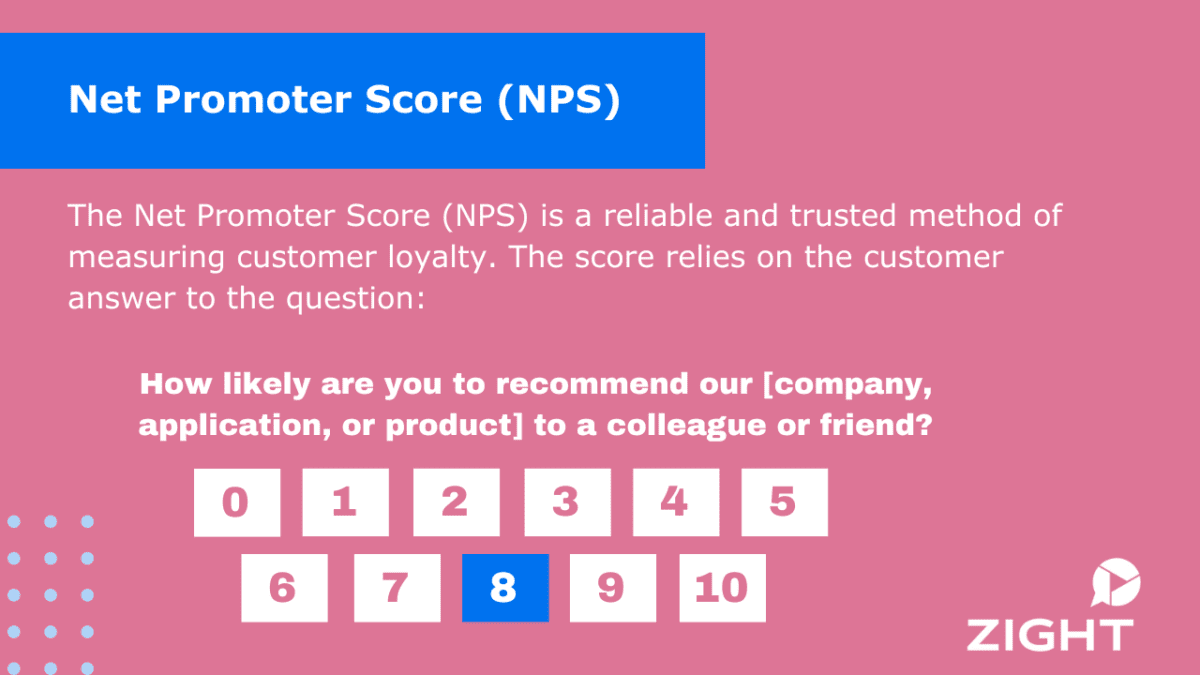
The Net Promoter Score (NPS) survey is one of the most valuable and famous. It was revealed to the world in a Harvard Business Review article by Fred Reichheld in 2003.
NPS essentially measures the loyalty your customers have toward your brand and if they’ll spread the good word about you to others.
Here are three customer satisfaction survey questions you can ask; plus, the options you can give your customers from 0 (not at all likely) to 10 (extremely likely):
a) How likely is it that you would recommend our company/product/service to a friend or colleague?
- Not At All Likely
- Extremely Unlikely
- Very Unlikely
- Unlikely
- Somewhat Unlikely
- Neutral
- Somewhat Likely
- Likely
- Very Likely
- Extremely Likely
- Definitely
b) How much do you trust our company to deliver on our promises?
- No Trust At All
- Very Low Trust
- Low Trust
- Some Trust
- Moderate Trust
- Neutral
- High Trust
- Very High Trust
- Complete Trust
- Absolute Trust
- Unconditional Trust
c) How likely are you to choose our company over others?
- Not At All Likely
- Extremely Unlikely
- Very Unlikely
- Unlikely
- Somewhat Unlikely
- Neutral
- Somewhat Likely
- Likely
- Very Likely
- Extremely Likely
- Definitely
Here’s how to measure customer satisfaction from the results of an NPS survey:
- Detractors: Scores of 0 to 5; Customers who are strongly dissatisfied with your services or products and may even speak out against your company.
- Passives: Scores of 6 or 7; Customers are satisfied but not motivated to promote your business.
- Promoters: Scores of 8 to 10; Your most enthusiastic customers who are excited to share your products or services with their network. May be social media influencers. They are also likely to be long-term, repeat customers.
To calculate your net promoter customer satisfaction score, subtract the percentage of detractors from the percentage of promoters.
If you have 100 survey results and 20 scored between 0 and 5, 30 scored between 6 and 7, and 50 scored between 8 to 10, you would have:
- 20% detractors
- 30% passives
- 50% promoters
50% promoters – 20% detractors = 30%, making your net promoter score 30.
3. Customer Effort Score (CES) Surveys
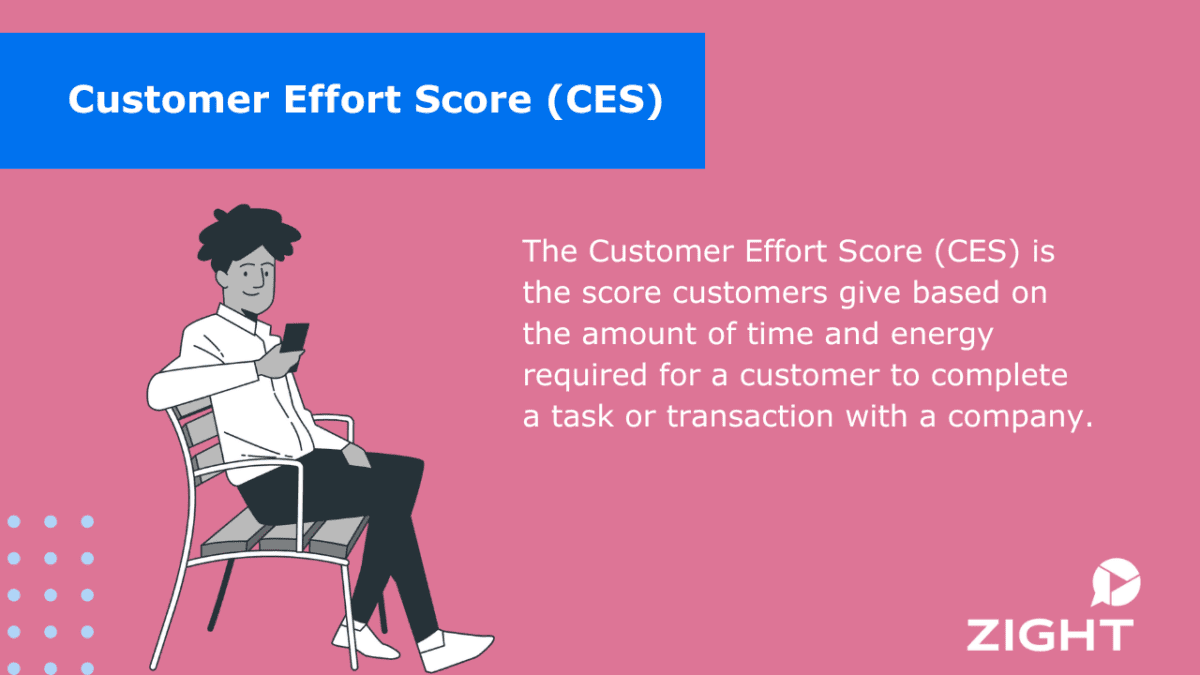
Customer effort score (CES) surveys measure how customers feel about the amount of work it took for them to interact with you and your customer service or support team.
The initial concept was pioneered in the book, The Effortless Experience.
According to the Harvard Business Review, 94% of customers who report a low level of effort would repurchase products from the business while 88% would spend more.
The way a CES survey works is similar to the previous ones; it asks questions along the lines of: “How easy was it to get the help you wanted from us today?”. Let’s explore the customer satisfaction survey questions you can ask, and the shortlist of responses you can give your customers:
a) How easy was it to find the information you were looking for on our website?
- Very Difficult
- Difficult
- Neither Difficult Nor Easy
- Easy
- Very Easy
b) How easy was it to complete your purchase with us today?
- Very Difficult
- Difficult
- Neither Difficult Nor Easy
- Easy
- Very Easy
Another way you may structure the survey is by making a statement and asking if respondents agree or disagree. Here is an example of your customer satisfaction survey question:
c) To what extent do you agree or disagree with the following statement: The customer service rep helped me solve my issue quickly and easily.
- Strongly Disagree
- Disagree
- Neither Agree nor Disagree
- Agree
- Strongly Agree
Some companies go the extra mile and add in a clever open-ended question that follows these choices, asking respondents to “briefly describe why you chose your selected number.” Here’s an example:
d) What could we do to make your experience on our website easier and more enjoyable?
This is a smart move because it allows customers who have a lot to say to elaborate and provide deeper insights into their state of mind and your customer service. They will share their suggestions and feedback on how you can improve your service and reduce their effort. It also shows that you care about their opinions and satisfaction!
4. Post-Purchase Survey

A post-purchase survey is sent after customers buy a product or service from your company. They’re meant to gauge the experience customers had during their transactions.
Unlike the NPS survey which seeks to understand customer loyalty generally, post-purchase surveys are specific and focused on a particular interaction between the customer and your company.
This survey can determine 3 things:
- Quality of customer service
- Quality of checkout
- Quality of products
The customer will tell you which one gave them problems.
Because these surveys are so specific, they vary greatly from company to company. But generally, they ask questions like “Are you satisfied with the products you purchased?”
Then you can give customers the same choices as the question from a CSAT survey, from Very Satisfied to Very Unsatisfied. Here are some examples of customer satisfaction survey questions and their multiple-choice options:
a) How well did the product match the description on our website?
- Not At All
- Poorly
- Somewhat
- Well
- Perfectly
b) How satisfied are you with the delivery time of your order?
- Very Unsatisfied
- Unsatisfied
- Neither Satisfied Nor Unsatisfied
- Satisfied
- Very Satisfied
c) How easy was it to complete your checkout process on our website?
- Very Difficult
- Difficult
- Neither Difficult Nor Easy
- Easy
- Very Easy
You can also ask open-ended questions when conducting customer satisfaction surveys after customers purchase. Here’s an example:
d) What did you like most about your shopping experience with us?
This question will help you request customer feedback to identify what makes your customers happy, reinforce the positive aspects of your customer experience, and collect testimonials and reviews. Overall, it’s a good way to learn what you can do to increase customer and client retention.
5. Product Development Survey
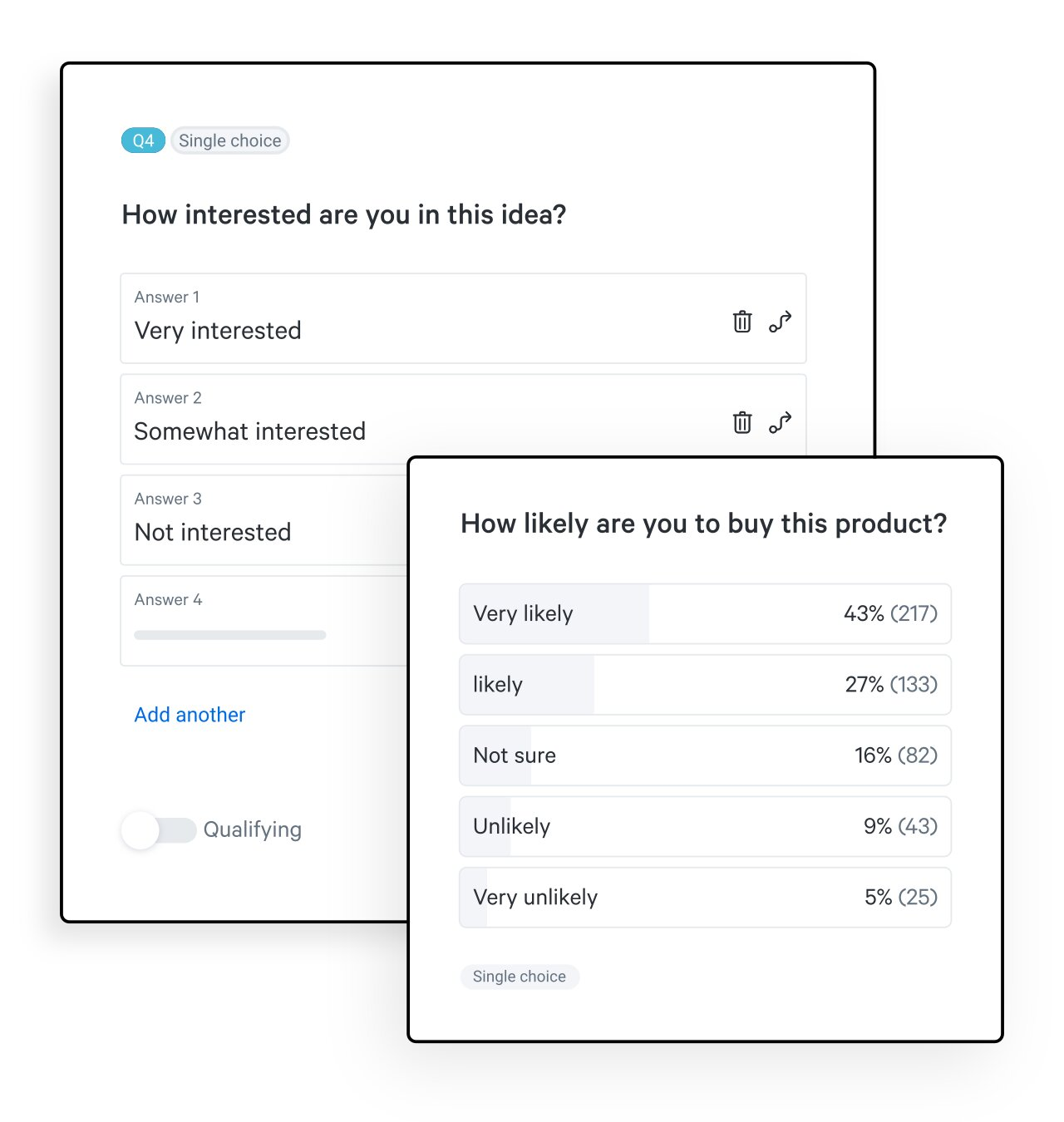
A product development customer satisfaction survey is unique in that it tries to understand what customers want in the future, instead of how they feel in the present.
This is sometimes known as concept testing and is performed before you launch or begin developing a new product to get a feel for how much interest there is in this new product. The last thing you want to do is commit tons of time and money to a project that fails to satisfy customer expectations and requirements.
To run conduct this customer satisfaction survey, you want to ideally show customers a sample of the product you’re developing, either in-person or online, including the price and then ask pointed questions about the product.
The people you need customer feedback from are the most loyal ones who will give you the most valuable advice. Here are a few customer satisfaction survey examples you can ask.
a) How interested are you in buying or using our new product?
- Not Interested
- Somehow Interested
- Interested
- Very Interested
b) How well will our new product meet your needs or solve your problems?
- Not At All
- Not Well
- Somewhat
- Well
- Very well
c) How do you feel about the price of our new product?
- Very Expensive
- Expensive
- Reasonably Priced
- Cheap
- Very Cheap
You can also ask an open-ended question like this one:
d) What concerns or questions do you have about our new product?
This question can help you identify the potential barriers or objections that might prevent your customers from buying or using your new product. You’ll also get the chance to address and overcome customer satisfaction concerns in your product development and customer service.
6. Usability Surveys
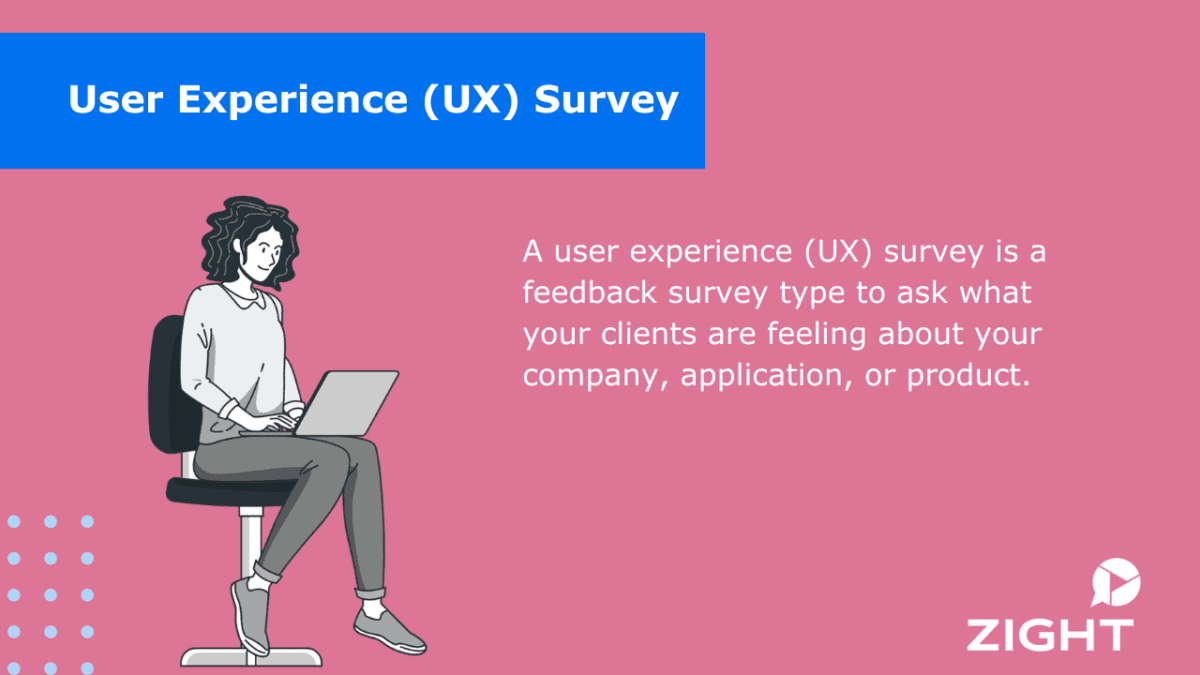
Usability surveys, or user experience (UX) surveys, are used to understand how easy or difficult it is to navigate your product, app, service, website, or any other customer-facing solution.
It’s most commonly used on websites, and many companies include these surveys as a popup shown to customers who are browsing.
You can ask customers a bunch of different types of survey questions, and you usually want to include some that ask about:
- Demographics, so you know who is using your solution
- How they use your solution
- What are the most important tasks they perform with your solution
- Specific problems customers have with your solution
- The reason why behind the answers they provide
Like product development surveys, usability surveys help you upgrade or improve your current product offering.
Here are some usability survey questions you can ask to measure customer satisfaction:
a) Which of the following best describes your role or occupation?
- Student
- Teacher
- Engineer
- Designer
- Marketer
- Other (please specify)
b) How often do you use our solution?
- Daily
- Weekly
- Monthly
- Occasionally
- Never
c) How easy or difficult is it to perform the tasks that are most important to you with our solution?
- Very Difficult
- Difficult
- Neither Difficult Nor Easy
- Easy
- Very Easy
d) Have you encountered any problems or errors while using our solution?
- Yes
- No
- If yes, please describe the problem or error and how it affected your experience.
Types of Customer Satisfaction Survey Questions
The type of customer satisfaction survey question you ask will change the number and depth of answers.
There are many types of customer satisfaction survey questions you can use in your surveys. And there are many more types of surveys you can use than the ones we just listed.
The following types of customer satisfaction surveys range from what you should ask, to how you can ask the questions.
1. Customer Satisfaction Questions
We couldn’t start this list with any other type of survey question than customer satisfaction. Asking customers directly about how they feel is the surest way to measure the effectiveness of your products and customer service.
These questions work best on a scale, like 1-10 with NPS surveys, or with an emotional range, like satisfied to dissatisfied on a CSAT survey.
2. Product Use Questions
Product use questions get customer feedback concerning their interaction with your solution – whether it does what it’s intended to, their feelings about it, and anything else regarding their experience with your brand. The product development questions above fit into this category, along with usability and post-purchase surveys.
Product use questions you may ask are:
- How often do you use [product or service]?
- Does the [product or service] help you achieve your goals?
- What would you improve if you could?
3. Customer Demographics Questions
Customer demographic questions are all about your customers and who they really are.
Gathering this information makes it much easier to create buyer personas and segment customers into different groups based on their characteristics and customer journey. The customer journey and segmentation help you understand how best to sell your offers to them.
Common questions to ask in these surveys are:
- What is your age?
- What would best describe you? (This question is followed with a list of ethnicities to choose from.)
- Which gender do you identify most with? (Follow this with the answers “male,” “female,” and “prefer not to comment.”)
4. Future Action Questions
What we’re calling “future action” questions are those that allow your customer service team to follow up with participants and find out if they’d be willing to take more surveys again.
These types of questions are especially helpful with product development surveys where you want to get customer feedback from the same customers in the future after applying an update or rolling out a new product.
Here are some questions you might ask in your customer satisfaction survey template :
- May we contact you to follow up on these responses?
- In the future, would you be willing to take this survey again?
- If we were to apply an update to [product or service], would you be willing to provide us with your feedback again?
5. Multiple Choice Questions
Multiple-choice questions are definitely the most popular. They’re also the easiest to collect and analyze. You can quickly draw up charts and graphs based on customer feedback.
The big surveys, like CSAT, NPS, and CES all rely on some form of multiple-choice options. Not only do these make your job easier, but they also make it much more likely that customers will give you an answer without survey fatigue.
6. Open-Ended Questions
Open-ended questions may be more difficult to analyze, but they offer far more insight into the minds of your customers. They also give you a feel for your customer’s voice, what they say and think, and the words they use.
These types of questions encourage the most honest customer feedback and can be critical in understanding exactly what your customers really care about and what they don’t. Here are some questions worth asking:
- In your own words, describe how you feel about (insert company name or product here).
- How can we improve your experience with the company?
- Do you have any additional comments or feedback for us?
Sample Customer Satisfaction Survey Questions

Imitation is a key part of learning anything.
So if you’re a little uncertain about how to put these customer satisfaction surveys out there and exactly what questions to ask, or how they should be structured on the page, here are a few examples you would do well to follow.
1. Alignable
Alignable connects businesses with freelancers. Below is the email they send to customers encouraging them to take a brief, 5-minute survey.
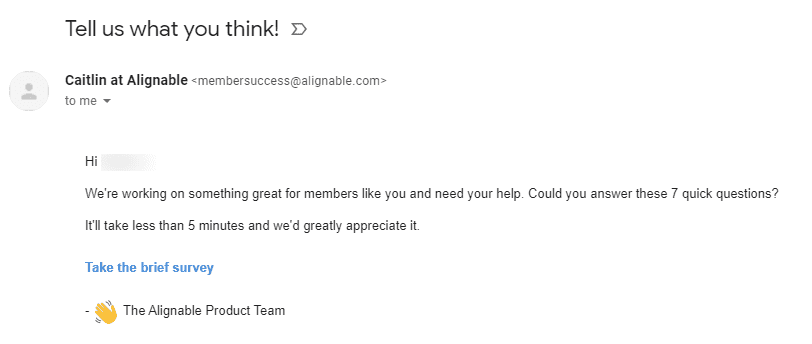
You’ll notice they tell you how long it will take and how many questions there are. That’s because if it’s too long and asks too many questions, responders will become fatigued and fail to finish the survey.
After you click the link, you’re redirected to a page with a couple of questions. There were more than those shown below, but Alignable started with demographic questions, which is something you should consider doing as well.
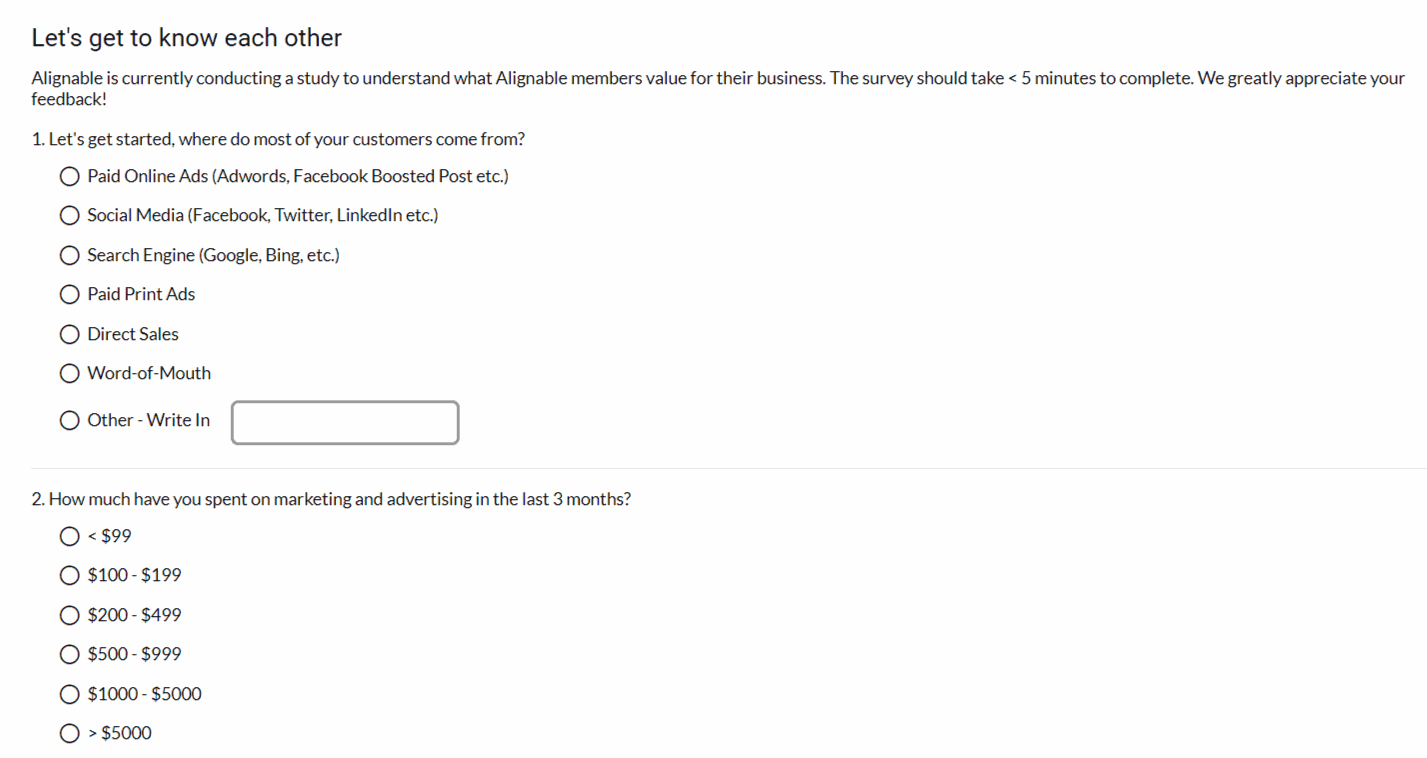
2. Ramit Sethi
Ramit Sethi is one of the world’s most popular personal finance and internet marketing gurus.
Here is one of the emails he sends out with a customer satisfaction survey inside:
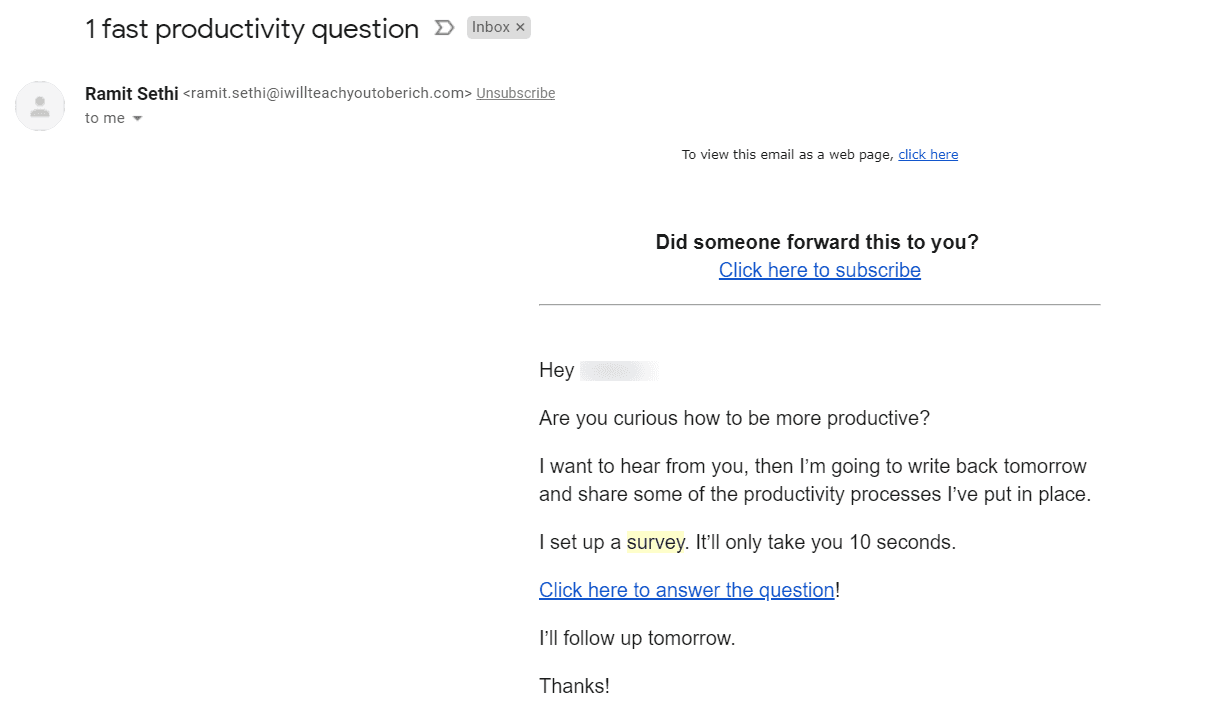
Ramit tells you that you’ll only have to answer a single question. When you click the link, you’ll see this screen:
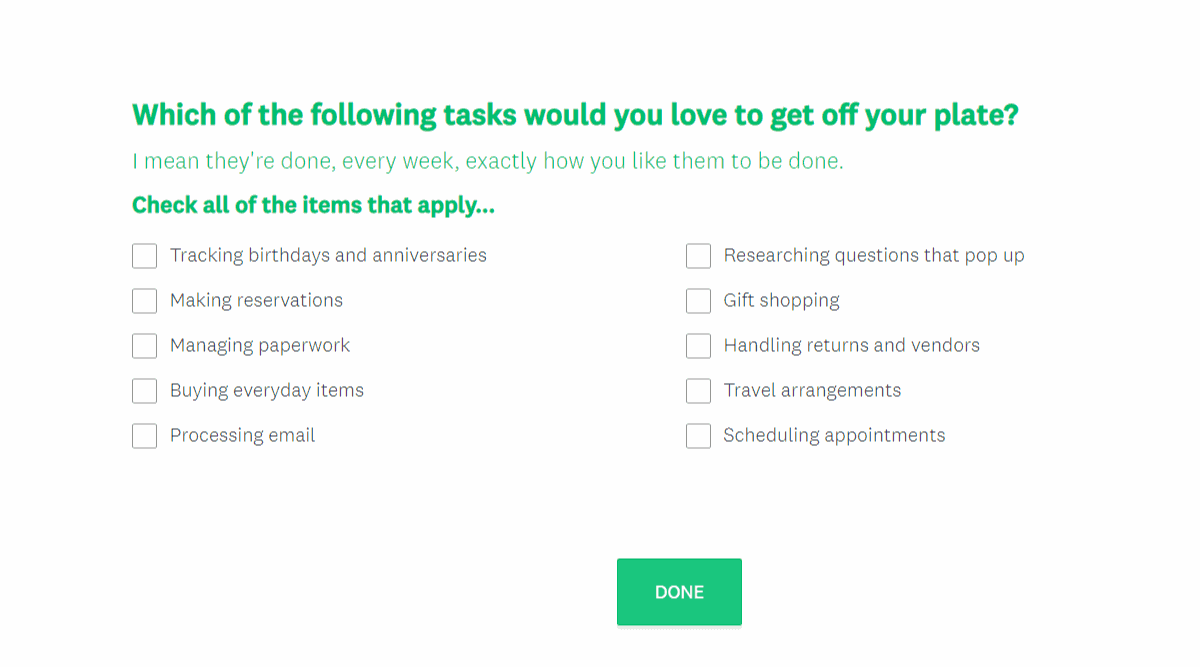
This is most definitely a product development survey email. He’s asking what I’m most interested in “getting off my plate” so he knows what problem his next product should solve.
3. Indiegogo
Indiegogo is the crowdfunding alternative to Kickstarter.
We don’t have an email from them, but we do have a survey they run with customers after they contribute money to someone’s project:
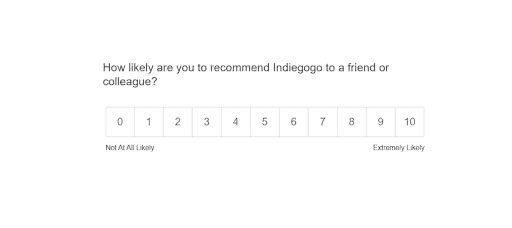
By now you should know what type of survey this is, right?
Net promoter score!
They ask this question immediately after you make a contribution to a project to find out if you’re likely to tell your friends and family about Indiegogo so they’ll visit the site, too.
Going Beyond Surveys to Boost Customer Satisfaction
Customer satisfaction surveys will tell you what people like, dislike, and what needs to be improved. But you need to put these insights into action. What that will mean for most companies is improving their customer service.
One excellent tactic for providing a better user experience, making more people excited to tell others about you, and leaving customers feeling truly satisfied is by using visual communication.
Meaning, annotated screenshots, GIF creation, and screen recordings for helping customers faster and communicate with them in the way they prefer (since most online users would rather watch videos than read text).
And Zight (formerly CloudApp) can help you do it in our easy-to-use, enterprise-grade app.
Plus, we’re one of the best out there. G2 Crowd ranked us as one of the top sales enablement tools.
We help your customer support team:
- Easily create support materials and tutorials
- Optimize customer support workflows
- Provide customers with detailed answers and close Zendesk tickets faster
- Improve your team’s CSAT scores
- Track bugs and document problems
- Improve customer support initiatives
And plenty more.
Get Zight to improve the results of your customer satisfaction surveys today.
Frequently Asked Questions About Customer Satisfaction Surveys
a) What are customer satisfaction surveys?
Customer satisfaction surveys are questions you ask your customers about your products or services. You can think of them as tools that allow you to collect customer satisfaction data so you know how to identify areas of improvement, make informed decisions, and enhance the overall customer experience.
b) What are 5 good survey questions?
Here are five questions you can ask to rate customer satisfaction and improve your service:
- How likely are you to recommend our product/service to others? (Rating scale: 1-5)
- What specific feature or aspect of our product/service do you find most valuable? (Multiple choice options: Feature A, Feature B, Feature C, Feature D, Feature E)
- How satisfied are you with the customer support you received? (Rating scale: Very satisfied, satisfied, neutral, Unsatisfied, very Unsatisfied)
- How frequently do you use our product/service? (Multiple-choice options: Daily, Weekly, Monthly, Rarely, Never)
- Is there any additional feedback or suggestions you would like to share with us?
c) What questions should I ask for customer feedback?
When analyzing customer satisfaction, it’s important to tailor your survey questions to gather specific insights that align with your goals. Here are some questions you can ask to collect awesome customer feedback:
- How did you hear about us?
- What factors influenced your decision to choose our product/service?
- How satisfied are you with the overall quality of our product/service?
- What specific improvements or enhancements would you like to see in our product/service?
- How would you rate the effectiveness of our customer support?
- Are there any challenges or issues you encountered while using our product/service?
- What impact has our product/service had on your daily life or business?
- How does our product/service compare to similar offerings in the market?
- Have you recommended our product/service to others? If yes, why? If not, what prevented you from doing so?
- Would you consider purchasing our product/service again in the future?
These questions will help you gauge customer satisfaction feedback and identify areas you can improve on. With these insights, you’ll be able to meet the expectations of your customers at different stages of their customer lifecycle.
Editor’s note: This article was first published in August 2021 but has been updated for comprehensiveness and detail.
